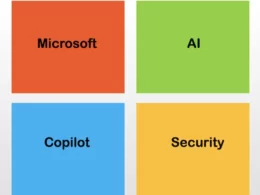Data security and encryption are essential for storing and passing data over a vast network. When information is stored on a centralized server, it is more vulnerable to attack.
Reports state that around 84 percent of customers are more loyal to companies with strong security controls. It means, for many businesses, federated learning could be a way to create a more secure environment for data while still being able to train machine learning models.
With this learning technique, the data is distributed among many devices, but it remains secure even if one device is compromised. If you want to know how it works and its importance for business organizations, here is the information.
What Is Federated Machine Learning?
Cybersecurity protects networks, devices, and data from unauthorized access or theft. According to recent research by Cisco, around 89 percent of executive leaders consider cybersecurity a high priority. Federated learning is a type of machine learning that helps protect data privacy while also allowing for the aggregation of models across multiple devices or organizations.
Learning is a decentralized approach to training machine learning models. Each device trains a model independently and then shares only the model parameters (weights and biases) with a central server. The server then aggregates these models to create a global model. The approach allows for training models on sensitive data while keeping the data private.
Types of Federated Machine Learning Platforms
As of 2015, 25 percent of the global data needed security but was not protected. That number was expected to increase to 45 percent in 2025. As a result, many companies are now turning to this form of encryption in response to these concerns. It is a type of machine learning that allows data to be processed locally on devices instead of in the cloud.
There are three types of this platforms:
1. Centralized
In centralized federated machine learning, the data is stored in a single location and processed by a central machine. This platform is used when there is a need for high security and privacy.
The benefits of a centralized form include:
- Efficiency: Data can be processed quickly and easily on a central machine.
- Security and privacy: Data is stored in a single location, making it more secure.
- Accuracy: Centralized learning can achieve high accuracy because the central machine processes all the data.
2. Decentralized
A decentralized form of machine learning takes place across multiple decentralized nodes. This data type is not centrally stored or processed but distributed among the various nodes. As a result, it allows for improved security, privacy, and faster processing times. Additionally, decentralized machine learning can help to reduce the bias that can often be found in data that is centrally stored.
One of its merits is that it allows for improved security and privacy. The data is not centrally stored or processed but distributed among the various nodes.
3. Heterogeneous
It helps build models better tuned to local data distributions, improving their accuracy. So it is also robust against concept drift, as local models will be retrained more often than centralized ones. Finally, machine learning is an attractive option when data is collected from sensors or other devices.
Conclusion
Many companies are already using learning to improve their products and services. Federated machine learning is a powerful tool that can improve the accuracy of machine learning models while protecting user privacy. It is helpful for natural language processing, image classification, and recommender systems.











